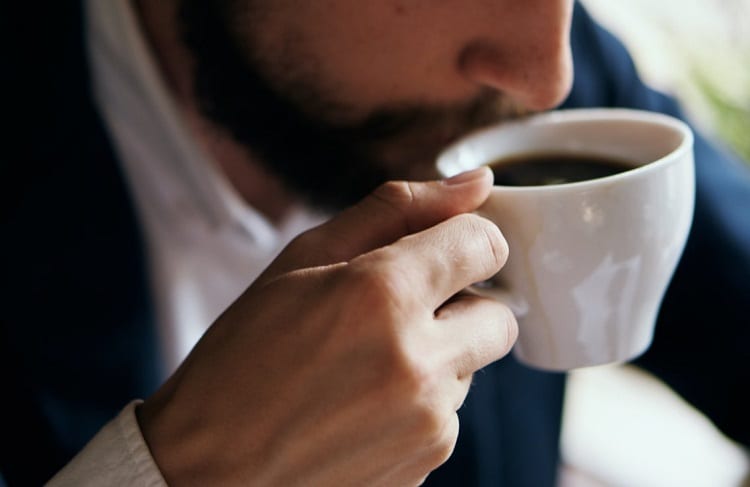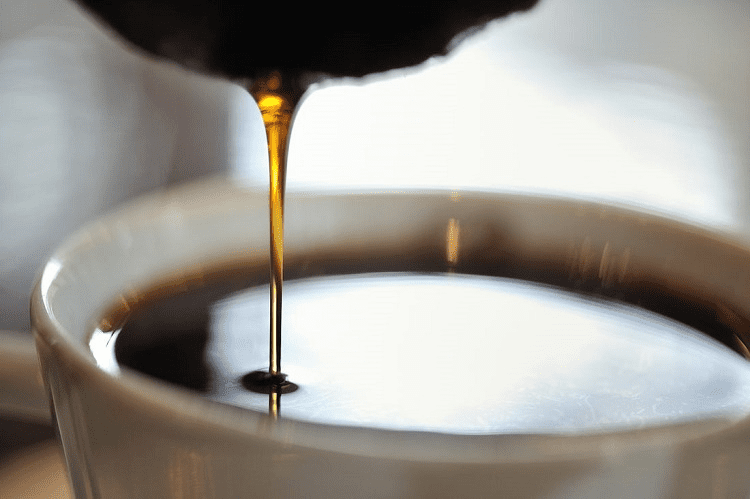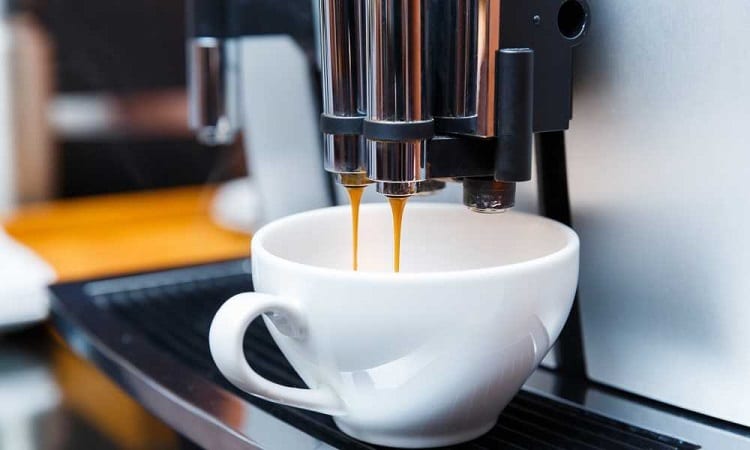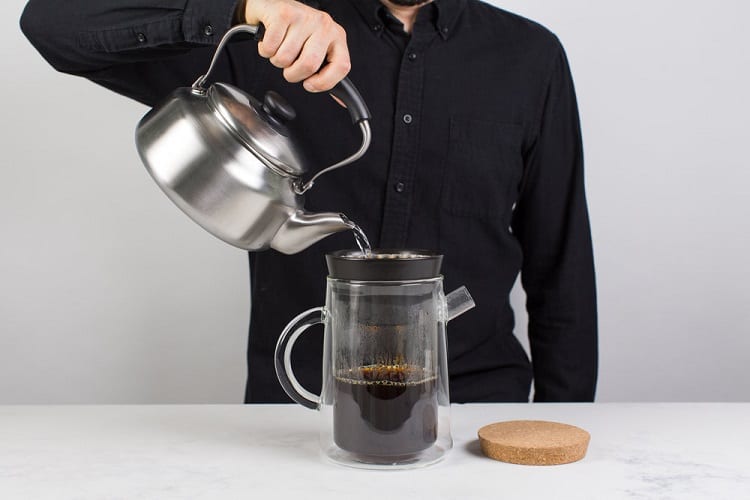Nothing is worse than getting that cup of coffee you’ve been waiting for, and it just tastes completely weak.
Not enough flavor, too watery, relatively no caffeine—totally flat.
Thankfully, there are a few ways that you can fix it. If your coffee tastes weak, that’s because it’s most certainly under-extracted.
If people can reuse grounds and get two pots of coffee out of the same amount, then there’s no reason for weak coffee.
Underextracted coffee is fixable, but to know how to fix it, you first have to know what the problems are.
How Does Under Extracted Coffee Taste?

If you can’t identify under-extracted coffee, then the rest of this information won’t be of much use to you.
Underextracted coffee tastes like someone took your perfectly balanced, great mug of morning coffee added three ounces of water to it, mixed it, and then took a sip.
It’s weak. It’s watered down.
But there is another form of under-extraction where you don’t have enough water, so you end up with more concentrated coffee.
That still technically counts as under extraction because you haven’t fulfilled the complete brewing process that you needed to.
So in that instance, it can taste extremely strong.
Either way, it’s like nothing you’ve ever drunk from a coffee house or QSR location before.
You’ll be able to notice immediately that something isn’t right, and at that point, you can use the rest of this guide to fix it.
What Causes Under Extracted Coffee?
A lack of balance.
Like it or not, coffee is akin to cooking and baking.
It’s a science that requires equal parts of certain ingredients; it just happens to be a super simple recipe for coffee and water.
Under-extracted coffee is primarily caused by two things:
Too Much Water

It essentially runs through the coffee too quickly by flooding the brew basket and then doesn’t pull enough of that delicious coffee flavor out.
While many would categorize this as being over-extracted, using too much water usually means that you’re pouring it through a mesh basket too fast and not letting it steep in the grounds long enough.
High water doesn’t necessarily mean over-extraction, it depends on the brewing method.
Not Enough Water
Quite literally the definition of under-extracted.
If you have the perfect amount of grounds for an eight-ounce cup of coffee, but you only push five ounces of water through it, you’re either going to end up with weak coffee because it wasn’t extracted, or strong coffee (depending on the brewer settings).
This is because the most flavorful part of coffee is extracted first.
If you were to pull a coffee pot off the burner when it was halfway through with brewing, you’d end up with super-concentrated, really thick-tasting coffee.
That’s because every ml of water coming through the coffee dilutes it by putting it into the cup, so the first 100ml of coffee that comes out of the brew basket will be stronger than the second 100ml of water.
The concentration of coffee gradually goes down while the overall volume goes up, evening everything out.
Under extraction is most commonly attributed to the coffee ground versus water ratio, but it can also be caused by the brewing method you choose.
For example, it’s very easy to under-extract coffee in a percolator, but it’s also very easy to over-extract as well.
Percolators bring water down over the coffee grounds through a tube that sucks up water, then the coffee falls into the water basin, travels back in the tube—you get the point.
If you don’t run it long enough, you’re not going to extract the coffee enough.
Run it too long, and you will over-extract since it’s eventually just coffee coming up through the tube that runs over the grounds even more.
How Do You Fix It?
Automatic Drip Coffee

Identify and write down the exact amount of water that was used and the ounces of grounds. This is not a time to say, “I put it up to the six on the pot, and then four tablespoons of coffee.” You need exacts if you’re going to fix under-extracted coffee.
Pick the coffee up and look through it. Is it a light brown with some light coming through? Is it thick and dark, but with a low volume? The former means you need more coffee or slower water, and the latter means you do not have enough water.
If your coffee is light and see-through, then put it back into the water tank of the coffee machine. Increase the number of your coffee grounds by 15%, and then rebrew. You will be brewing the same grounds as well as the new ones, which will pull additional coffee flavor out while supplementing your coffee with the new grounds.
Moving forward, be sure to weigh the grounds with a kitchen scale down to one-twentieth of an ounce. Measure your water in ml, not just with the lines on the side of the coffee pot. Find a perfect ratio for your coffee needs, and stick to it.
If your coffee is too dark, you can do one of two things. You can put it back in the water tank, add 30-40% of the original water volume, and rebrew it over the same grounds. The additional water will make up for any residual amounts of coffee that come through in the new brew.
Or you can heat up water to 200°F with an electric kettle or on a stovetop in a saucepan, then simply add it to the coffee. Stir well, adding 10% of the original volume at a time so you don’t end up with watery coffee.
From this point on, increase the amount of water you put in your coffee maker. Find the right ratio, and just stick with it.
If you’re still noticing that there isn’t enough water, check if your hot plate on the bottom is set too high or is malfunctioning.
It could be forcing water to evaporate quicker and reducing your overall volume in the end product.
Automatic drip coffee is much easier to fix than manual coffee, which we’ll get into in just a moment.
Manual Coffee Maker

Make sure your water temperature is set just right. Use a thermometer, or an electric water heating system that’s designed for pour-over coffee makers. You want under boiling, which would be no more than 202° F (with 200° being the absolute ideal temperature).
If your water isn’t hot enough, it’s not going to extract the coffee for the 60-120 seconds that you’re pouring. Even cold-brew coffee can take up to 18 hours to complete. This step is important.
Have a coffee-to-water ratio. Don’t just fill up the kettle and pour what you’ve got. If you’re going to fill up a 14 oz glass carafe on a manual coffee grinder right to the top, that’s fine, just know how many ounces of grounds you should have for the occasion.
Make sure the grounds rest flat; you don’t want an anthill of coffee right in the middle.
Pour over the grounds gently and evenly. Go in a clockwise circular motion until you’re out of water. This will ensure you’re getting the most flavor out of all the grounds.
Those are the steps for proper brewing. With pour-over coffee, getting a do-over is difficult. If you already prepared your coffee and it’s under-extracted, this is what you can do instead.
Just pour the coffee back over the grounds, but a little bit slower while moving in a clockwise motion.
Taste the coffee. You can repeat the same steps over and over again to add bits of strength here and there, just know that after about the sixth time, you’re not going to get much more out of those grounds.
That and the coffee is going to start to chill a little bit.
The bottom line is manual coffee is much easier to mess up.
Pour slowly, try to learn how to time it if you can based on the volume and diameter of the brew basket/mesh filter, and do what you can. You’ll eventually get the hang of it.
Better Coffee Every Time
Once you know what causes under-extracted coffee, you know what to do about it in every instance.
Add more water, use a stronger blend of coffee, or inspect your coffee maker for defects.
Having vigilance means you won’t have to experience under-extracted coffee ever again.
Stay on your toes when brewing your own coffee, and pay attention to the coffee weight and water volume, and you’ll be fine.